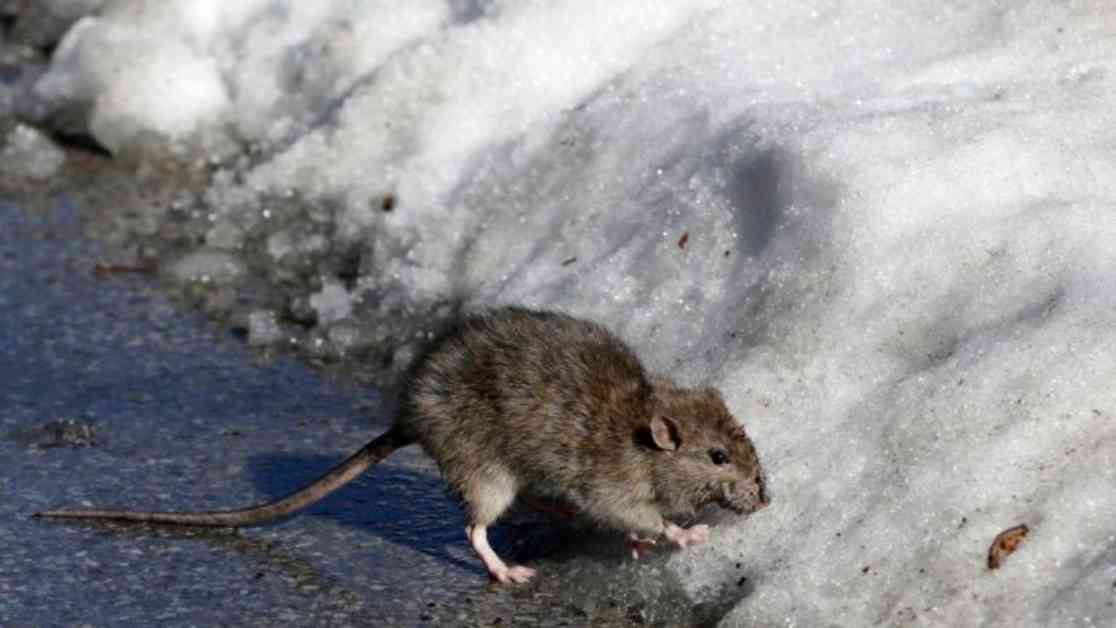Boston’s Rat Problem: A Growing Concern in a Changing Climate
In the bustling city of Boston, a new study has unveiled a concerning trend that has been plaguing residents for years. The warming climate, coupled with population density and vegetation cover, has been linked to the increasing rat populations in major cities, including Boston.
The study, published in the prestigious journal Science Advances, delved into data from 16 cities worldwide to analyze the troubling rise in rat populations. Out of these 16 cities, 11 experienced significant surges in rat numbers, with Boston being one of the cities affected. For many Bostonians, this revelation may not come as a shock, as the city has long been grappling with a notorious rat problem.
Rats, more than mere pests, pose a serious threat to residents by damaging infrastructure, contaminating food, and spreading numerous pathogens and parasites. The Boston Rodent Action Plan (BRAP), launched last summer, aimed to tackle the city’s rat woes by addressing issues such as poor trash management and aging infrastructure. However, the recent study suggests that the warming climate has now become an additional factor exacerbating the problem.
While the direct correlation between rising temperatures and increased rat activity has not been definitively proven, the study highlights a compelling observation. Warmer temperatures extend the window for rat foraging and breeding, leading to a spike in their population. This phenomenon underscores the intricate relationship between climate change and urban ecology, with rats adapting to changing environments.
Boston’s rat population surge, though significant, ranked ninth in terms of increased rat sightings during the study period. Cities like Washington, D.C., San Francisco, and Toronto reported more drastic surges in rat activity. Intriguingly, cities experiencing the most significant temperature changes over time also witnessed the most substantial rat population spikes.
Beyond climate change, factors such as vegetation cover and population density play crucial roles in nurturing rat populations. In Boston, densely populated neighborhoods with intricate alleyways and aging infrastructure provide ideal breeding grounds for rats. The city’s cobblestone streets and alleys create a conducive environment for rodents to thrive, further compounding the issue.
Interestingly, some cities managed to buck the trend of rising rat populations through proactive rat control measures. Cities like Tokyo, Louisville, Ky., and New Orleans saw declines in rat populations due to aggressive control practices. For instance, New Orleans implemented robust rodent control programs, emphasizing proactive surveillance and community engagement to curb rat populations effectively.
The study stresses the importance of creating an urban landscape less hospitable to rats as a long-term solution. While eradicating existing rat populations may be challenging, altering the environment to deter rats from thriving is a more sustainable approach. By focusing on environmental modifications rather than extermination efforts, cities like Boston can hope to rein in their rat populations and create a safer, healthier urban environment.
As Boston grapples with its growing rat population, the study serves as a poignant reminder of the intricate interplay between climate change, urban ecology, and public health. By addressing these multifaceted challenges head-on, cities can pave the way for a more harmonious coexistence between humans and wildlife.
In the wake of this study, Bostonians are urged to remain vigilant and proactive in addressing the city’s rat problem. Through collaborative efforts and innovative solutions, the city can work towards a future where rats no longer pose a threat to public health and well-being.






